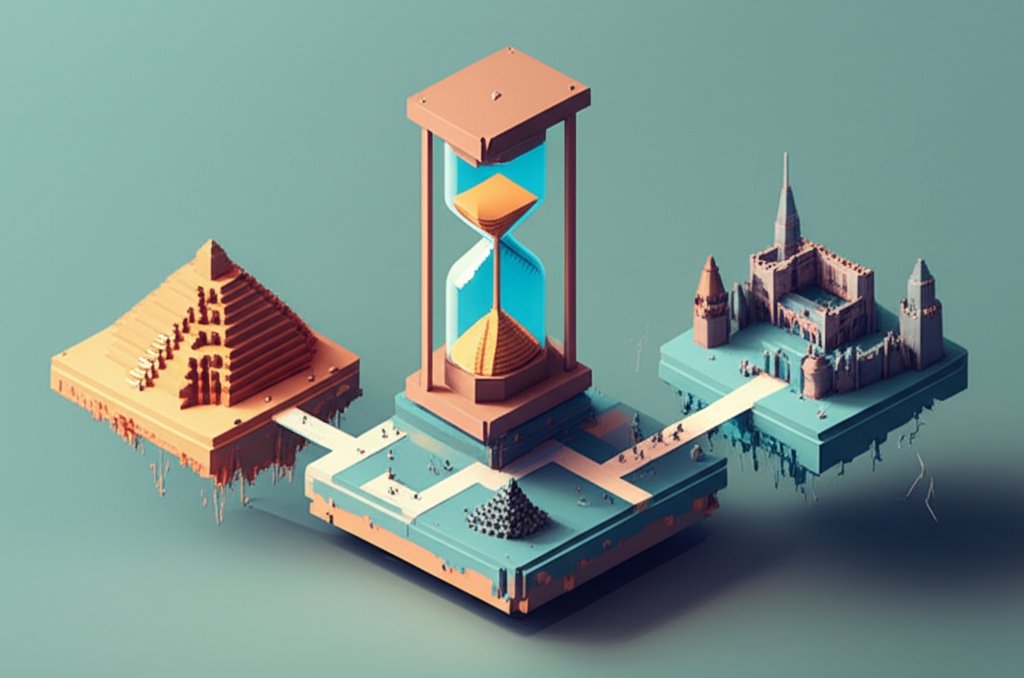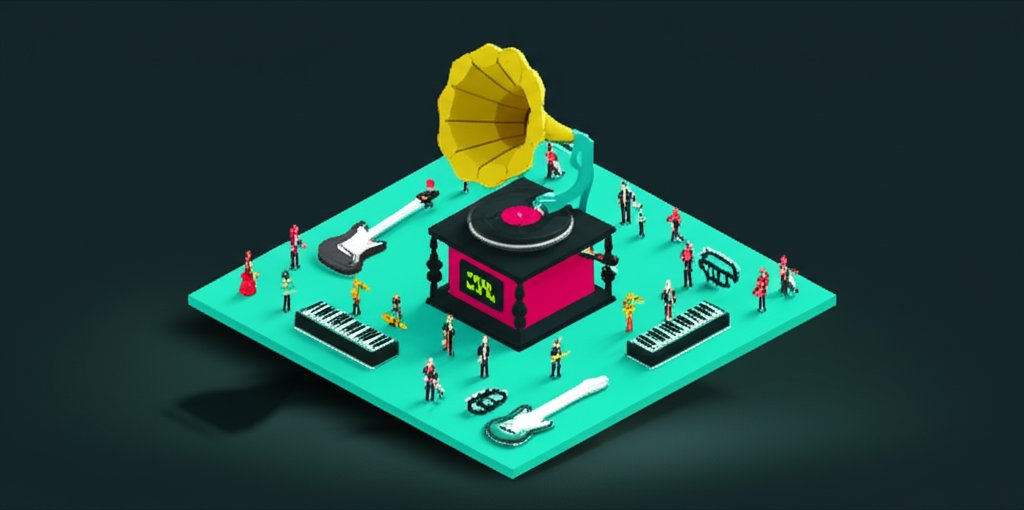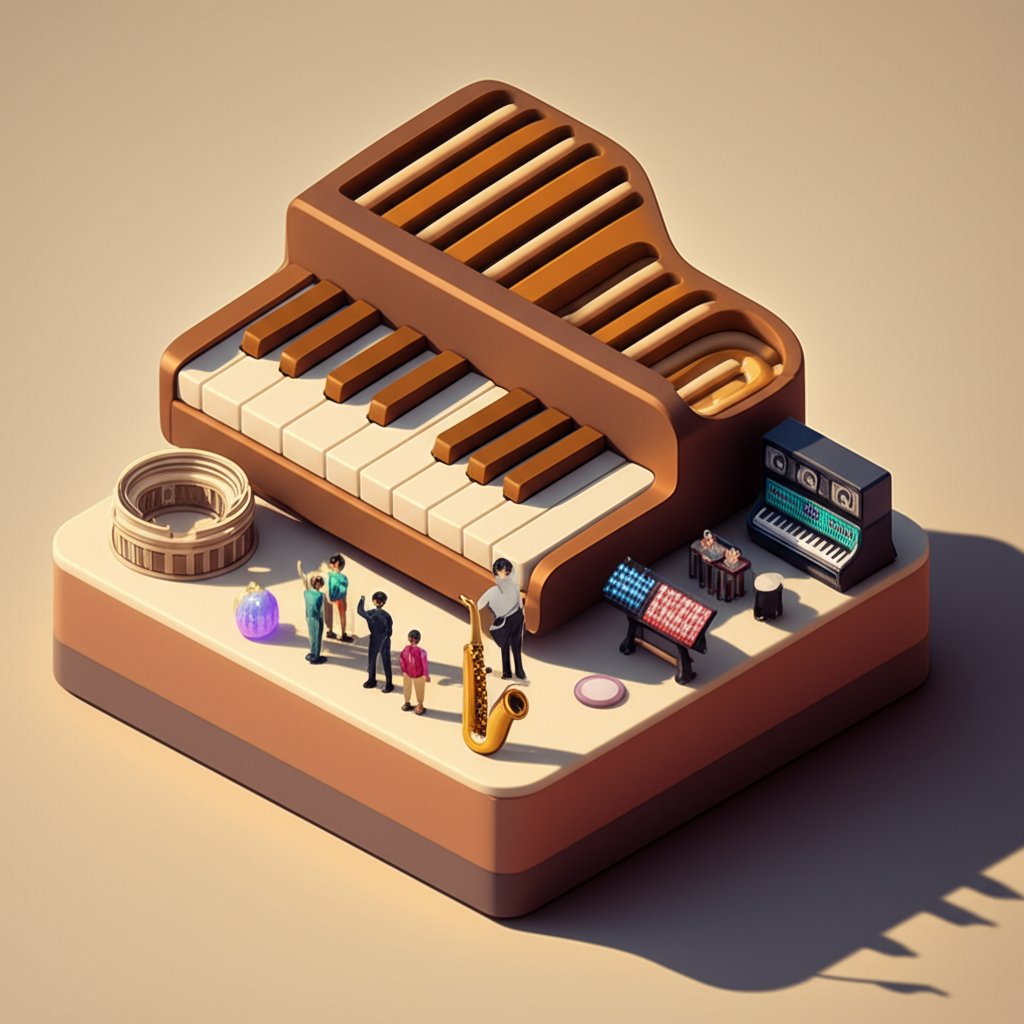Music, a constant companion throughout human history, is far more than just entertainment. It’s a powerful force that shapes our cultures, reflects our emotions, and provides a soundtrack to our lives. From the rhythmic chants of ancient civilizations to the synthesized beats of modern electronic music, the evolution of musical genres is a fascinating journey through time. This journey reveals not only the development of musical techniques and instruments but also the social, political, and technological influences that have shaped the sounds we listen to and love today. Embark on this exploration with us, and discover the rich tapestry of music history.
Ancient Roots and Early Music
Music’s origins are as old as humanity itself. Archaeological evidence, such as bone flutes dating back tens of thousands of years, suggests that music was an integral part of early human societies. These early forms of music likely served various purposes, from ritualistic ceremonies to storytelling and emotional expression.
Prehistoric Music: Sounds of Our Ancestors
While reconstructing prehistoric music is challenging due to the lack of written records, we can infer its characteristics from archaeological findings and anthropological studies of indigenous cultures. Percussion instruments, such as drums and rattles, were likely prominent, along with vocal music, including chants and rhythmic songs. These sounds were often intertwined with religious beliefs and social practices.
The Music of Ancient Civilizations: Mesopotamia, Egypt, and Greece
The rise of ancient civilizations brought about more sophisticated musical forms. In Mesopotamia, evidence suggests the existence of complex musical systems with instruments like harps and lyres. Similarly, ancient Egypt saw the development of a rich musical culture, with music playing a vital role in religious ceremonies and royal courts. Ancient Greece made profound contributions to music theory and philosophy, developing musical scales and modes that influenced Western music for centuries. They also explored the emotional and ethical effects of music, as detailed by philosophers like Plato and Aristotle.
The Development of when was musical notation began its initial stages during these early eras, although it would take centuries to evolve into the modern system we use today. The seeds of musical organization were sown here.
Medieval Music: Gregorian Chant and the Rise of Polyphony
The Middle Ages saw significant developments in Western music, largely driven by the influence of the Christian Church. Gregorian chant, a form of monophonic sacred music, became standardized and widely adopted throughout Europe. This period also witnessed the gradual emergence of polyphony, the combination of multiple independent melodic lines, which would revolutionize Western music.
Gregorian Chant: The Sound of the Church
Gregorian chant, named after Pope Gregory I, is characterized by its simple melodies, modal scales, and Latin texts. Its primary purpose was to enhance religious services and create a contemplative atmosphere. The development of a standardized system of notation helped preserve and disseminate Gregorian chant throughout Europe.
The Birth of Polyphony: Organum and Beyond
Polyphony began to emerge in the 9th century with the development of organum, a style of music in which a second melodic line was added to a Gregorian chant melody. Over time, organum evolved into more complex forms of polyphony, with multiple independent voices interacting with each other. Composers like Léonin and Pérotin, associated with the Notre Dame school in Paris, pushed the boundaries of polyphonic composition.
The Renaissance: Humanism and Musical Innovation
The Renaissance, a period of renewed interest in classical art and learning, brought about significant changes in music. Humanism, a philosophical movement that emphasized human potential and achievement, influenced musical aesthetics and encouraged composers to explore new forms of expression. The invention of the printing press facilitated the wider dissemination of music, contributing to its growth and development.
The Rise of Secular Music: Madrigals and Chansons
While sacred music remained important during the Renaissance, secular music experienced a surge in popularity. Madrigals, polyphonic vocal compositions based on Italian poetry, became a popular form of entertainment in aristocratic circles. In France, chansons, similar in style to madrigals, also gained prominence. These secular forms allowed composers to explore themes of love, nature, and courtly life.
Musical Instruments of the Renaissance: Lutes, Viols, and Recorders
The Renaissance saw the development and refinement of various musical instruments. The lute, a plucked string instrument, became particularly popular, while the viol family of string instruments gained prominence in both chamber and orchestral music. Recorders, wind instruments with a sweet and mellow tone, were also widely used.
The Baroque Era: Ornamentation and Grandeur

The Baroque era (roughly 1600-1750) was characterized by its elaborate ornamentation, dramatic contrasts, and grand scale. New musical forms, such as opera, concerto, and sonata, emerged and flourished. Composers like Johann Sebastian Bach, George Frideric Handel, and Antonio Vivaldi left an indelible mark on Western music.
Opera: A Fusion of Music, Drama, and Spectacle
Opera, a dramatic work in which the actors sing their parts, originated in Italy in the early 17th century. It quickly spread throughout Europe, becoming a popular form of entertainment for both aristocratic and public audiences. Baroque opera was characterized by its elaborate costumes, stage designs, and vocal virtuosity.
The Concerto: A Dialogue Between Soloist and Orchestra
The concerto, a musical form in which a soloist or group of soloists is contrasted with an orchestra, emerged as a prominent genre during the Baroque era. Composers like Vivaldi wrote hundreds of concertos, showcasing the virtuosity of solo instruments. The Baroque concerto typically consists of three movements: fast-slow-fast.
Bach and Handel: Titans of the Baroque
Johann Sebastian Bach and George Frideric Handel are widely regarded as the greatest composers of the Baroque era. Bach’s complex contrapuntal textures, profound religious expression, and masterful use of organ and harpsichord set a new standard for musical composition. Handel’s operas, oratorios, and instrumental works captivated audiences with their dramatic power, melodic beauty, and skillful orchestration. Bach’s contributions to ultimate music history are immeasurable.
The Classical Period: Order and Clarity

The Classical period (roughly 1750-1820) emphasized order, clarity, and balance in music. Composers like Wolfgang Amadeus Mozart, Joseph Haydn, and Ludwig van Beethoven sought to create music that was both intellectually stimulating and emotionally appealing. The symphony, sonata, and string quartet became important instrumental genres.
The Symphony: A Grand Orchestral Work
The symphony, a large-scale orchestral work typically consisting of four movements, became a central genre of the Classical period. Haydn, often called the “father of the symphony,” composed over 100 symphonies, establishing the basic structure and characteristics of the genre. Mozart and Beethoven further developed the symphony, expanding its scope and expressive potential.
Sonata Form: A Blueprint for Musical Structure
Sonata form, a structural principle widely used in instrumental music of the Classical period, typically consists of three sections: exposition, development, and recapitulation. The exposition introduces the main themes, the development explores and transforms them, and the recapitulation restates them in a modified form.
Mozart and Beethoven: Masters of the Classical Style
Wolfgang Amadeus Mozart and Ludwig van Beethoven are considered the greatest composers of the Classical period. Mozart’s operas, concertos, and symphonies are renowned for their melodic beauty, elegant orchestration, and dramatic insight. Beethoven’s symphonies, sonatas, and string quartets pushed the boundaries of musical expression, paving the way for the Romantic era. Definitive classical music examples are abundant in their works.
The Romantic Era: Emotion and Expression
The Romantic era (roughly 1820-1900) emphasized emotion, imagination, and individualism in music. Composers sought to express their personal feelings and experiences through their music, often drawing inspiration from literature, art, and nature. The orchestra expanded in size and complexity, and new instrumental forms, such as the tone poem, emerged.
Program Music: Telling Stories Through Sound
Program music, instrumental music that is intended to evoke specific ideas or images, became popular during the Romantic era. Composers like Hector Berlioz, Franz Liszt, and Richard Strauss wrote tone poems that depicted literary works, historical events, and natural scenes.
The Rise of the Virtuoso: Liszt and Paganini
The Romantic era saw the rise of the virtuoso performer, a musician of extraordinary technical skill and artistic flair. Franz Liszt, a pianist, and Niccolò Paganini, a violinist, captivated audiences with their dazzling performances and innovative techniques.
Wagner and Verdi: Operatic Giants
Richard Wagner and Giuseppe Verdi were the dominant figures in opera during the Romantic era. Wagner’s operas, known for their epic scale, complex symbolism, and innovative use of leitmotifs (recurring musical themes associated with specific characters or ideas), revolutionized the genre. Verdi’s operas, celebrated for their dramatic intensity, melodic beauty, and realistic portrayal of human emotions, remain among the most popular works in the operatic repertoire.
The 20th Century and Beyond: Experimentation and Diversity
The 20th century witnessed a radical transformation in music, as composers experimented with new sounds, techniques, and forms. Serialism, atonality, and electronic music emerged as important trends. The rise of popular music genres, such as jazz, blues, rock and roll, and hip hop, further diversified the musical landscape.
Serialism and Atonality: Breaking with Tradition
Serialism, a compositional technique developed by Arnold Schoenberg, involves organizing musical elements, such as pitch, rhythm, and dynamics, into predetermined series. Atonality, the absence of a tonal center, became a prominent feature of much 20th-century music. These techniques challenged traditional notions of harmony and melody.
Electronic Music: The Dawn of a New Sound
The invention of electronic instruments, such as the theremin, synthesizer, and computer, opened up new possibilities for musical expression. Composers like Karlheinz Stockhausen, Pierre Boulez, and Edgar Varèse pioneered electronic music, creating sounds that were previously unimaginable.
Jazz, Blues, Rock and Roll, and Hip Hop: The Sound of Popular Culture
Jazz, blues, rock and roll, and hip hop emerged as dominant forces in popular culture during the 20th century. These genres, each with its unique characteristics and cultural context, have influenced music worldwide and continue to evolve and innovate. Master modern music with an understanding of these foundational genres.
Global Music Influences and Fusion Genres
The 21st century is marked by increasing globalization and cross-cultural exchange, which has led to a proliferation of fusion genres that blend elements from different musical traditions. World music, a broad category encompassing music from diverse cultures around the globe, has gained popularity.
World Music: A Celebration of Global Diversity
World music encompasses a vast array of musical styles from different cultures around the world. It often involves the use of traditional instruments, vocal techniques, and rhythmic patterns. World music festivals and recordings have helped to introduce audiences to the rich diversity of musical traditions.
Fusion Genres: Blending the Boundaries
Fusion genres, which combine elements from different musical traditions, have become increasingly common. Latin jazz, which blends jazz harmonies and improvisation with Latin American rhythms, is one example. Other fusion genres include Afrobeat, which combines African rhythms with funk and jazz, and Celtic rock, which blends Celtic folk music with rock instrumentation.
The Impact of Technology on Music: Production and Distribution
Technology continues to play a major role in shaping the music industry. Digital audio workstations (DAWs) have made it easier for musicians to create and record music at home. Online music streaming services have transformed the way people consume music, while social media platforms have provided new avenues for artists to connect with their fans.
The Enduring Power of Gospel Music
Originating in the African American church, history gospel music has evolved from spirituals and hymns to a genre with immense cultural and spiritual significance. Its powerful vocals, uplifting messages, and influence on other genres make it a vital part of music history.
Key Figures in Gospel Music
Mahalia Jackson, Thomas Dorsey, and the Staple Singers are just a few of the pioneering figures who shaped the sound and direction of gospel music. Their contributions continue to inspire generations of musicians and listeners.
Gospel Music’s Influence on Other Genres
The influence of gospel music can be heard in genres such as soul, R&B, and rock and roll. Many secular artists have drawn inspiration from gospel’s vocal techniques, harmonies, and emotional intensity. Delve deeper into gospel music history to understand its profound influence.
The journey through the history of music genres reveals a fascinating story of human creativity, innovation, and cultural exchange. From the ancient roots of music to the diverse and dynamic landscape of the present day, music has constantly evolved, reflecting the changing times and the enduring power of human expression. As technology continues to advance and cultures continue to interact, the future of music promises even more exciting possibilities. Explore a captivating gospel music documentary to further understand the story and evolution.
Frequently Asked Questions (FAQ)
Q: What is the oldest known musical instrument?
A: Bone flutes, dating back tens of thousands of years, are considered the oldest known musical instruments.
Q: What is Gregorian chant?
A: Gregorian chant is a form of monophonic sacred music that became standardized and widely adopted throughout Europe during the Middle Ages.
Q: What is the difference between classical and romantic music?
A: Classical music emphasizes order, clarity, and balance, while Romantic music emphasizes emotion, imagination, and individualism.
Q: What is serialism?
A: Serialism is a compositional technique that involves organizing musical elements, such as pitch, rhythm, and dynamics, into predetermined series.
Q: What are some examples of fusion genres?
A: Latin jazz, Afrobeat, and Celtic rock are examples of fusion genres that blend elements from different musical traditions.










